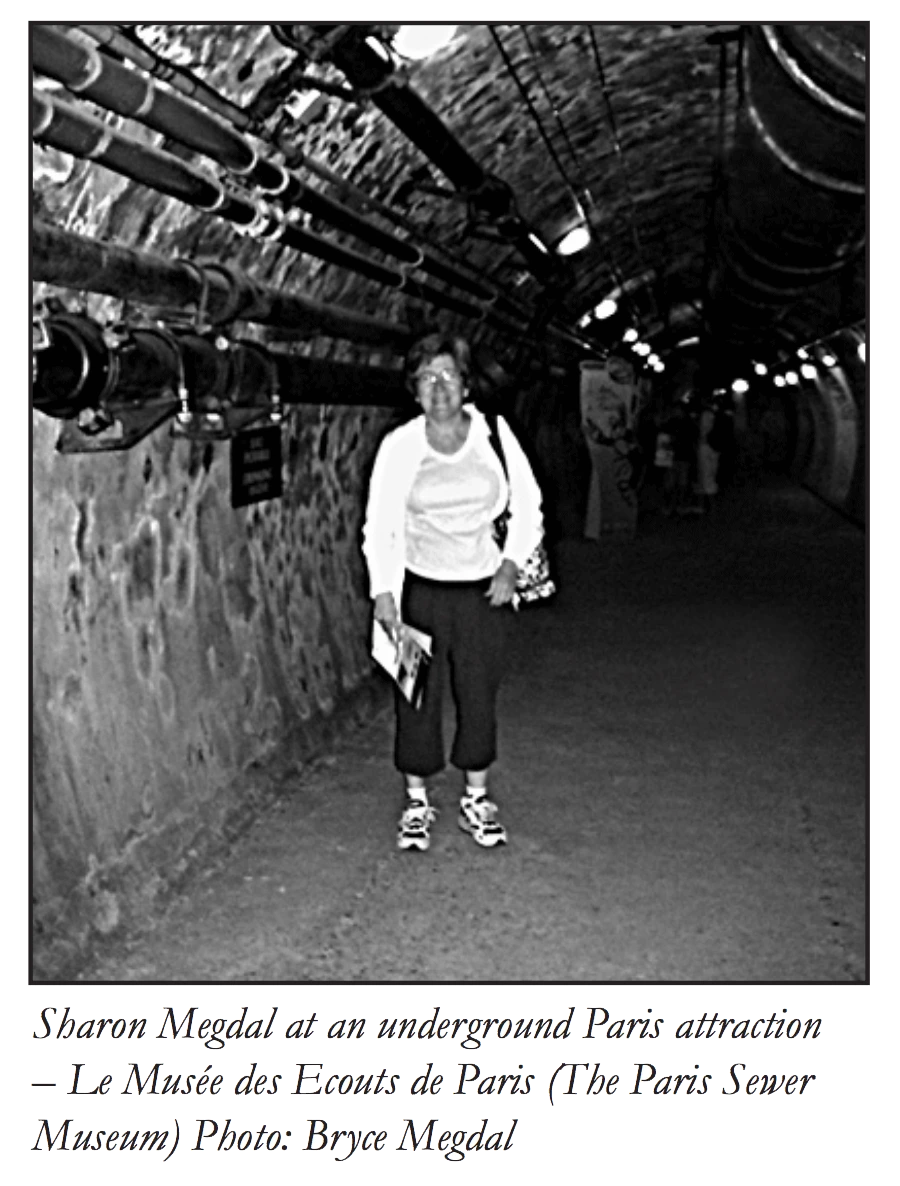Public Policy Review

I traveled to Paris in June to give a lecture sponsored by the Parisian water provider Eau de Paris and Centre National de la Recherche Scientifique. A government-funded research organization administered by France’s Ministry of Research, CNRS and the University of Arizona recently entered into a four-year Joint International Unit on Water, Environment and Public Policy. The unit’s purpose is to foster international, interdisciplinary and collaborative social science and water policy work.
In preparation for this trip, my first to Paris, I carefully perused my Rick Steve’s tour book and was intrigued to read about a tour of the world’s first underground sewer system. Located blocks from where my daughter and I were staying, Le Musée des Ecouts de Paris (The Paris Sewer Museum) earned a lukewarm rating — one-diamond signifying it is “worthwhile if you can make it”— yet was described as “fascinating, if slightly stinky.”
Descending the steps to the underground museum adjacent to the Seine River, I was eagerly greeted by several young women, their enthusiasm likely the result of the museum often being overlooked by tourists who much prefer Notre Dame, the Eiffel Tower or the Louvre, attractions we also visited. I mentioned that I worked in water resources, prompting one young woman to provide me documentation along with the usual visitors’ brochure. The self-guided tour included English translations. A display of special interest to me noted: “In 1977 the City covered about 10,000 hectares ... and had 2.1 million inhabitants. The suburbs, for their part, covered about 76,000 hectares and had almost 8 million inhabitants. This underlined the importance of water policy.”
I was very excited to see water policy underscored, and I was struck by Paris’ celebration of its water system, including its sewers. I thought the museum was very beneficial, a reminder to the community of its water history and the great engineering feats that have been accomplished. Museum coverage extends to the modern day.
I acquired very useful information from my Sewer Museum tour and a visit with the Directeur de l’Exploitation, Bruno Nguyen, at Eau de Paris. With the perspective I gained, I was struck with the differences between Paris and our state’s two largest urban areas. An extremely densely populated city with plentiful water, Paris has long had two systems for potable and non-potable water deliveries, with non-potable water used for street cleaning and other outside uses.
My lecture focused on urban water management in Arizona and highlighted many of the water management challenges associated with living in a water-scarce, rapidly growing area. Challenges include: regional drought; uncertainties associated with climate change; growth in Arizona and the Colorado River region; water management outside the Active Management Areas, including water quantity assessments; water quality; use of effluent for potable and other water needs; access to and utilization of other renewable supplies; interstate and border water issues; the surface water/groundwater interface; riparian areas and other environmental considerations; and implementing effective conservation programs.
Discussion following the lecture focused on pricing of water and conservation efforts. I had no problem discussing pricing, noting that few places in the world incorporate scarcity in pricing of their water. I noted that water prices reflect the cost of extraction/diversion, treatment and delivery. We all expect water to become more costly over time because the cost associated with obtaining, treating and delivering water will increase over time. By how much and how quickly are the questions. Our system of water pricing associates no value to the water molecules themselves.
Questions were raised about conservation programs in Arizona, and although I could speak to some of what we do with tiered pricing and municipal conservation programs, I felt somewhat at a loss in discussing why we were not doing more water conservation. In preparation for my presentation, I did some quick calculations to compare use of potable water by Parisians on a per capita basis and the figures for Tucson Water customers. Although not entirely comparable, on a per capita basis, Tucson water use is easily twice as high as that for the Eau de Paris service area. It seemed to me then and still seems to me that we have considerable capacity to conserve more than we do.
Tucson, Pima County and many other entities around the state are placing renewed emphasis on conservation programs, and the Arizona Department of Water Resources is poised to develop conservation programs for the Fourth Management Plans in the Active Management Areas. I came home thinking that although conservation alone won’t solve our water scarcity dilemma, we still need to better educate water users about conservation and the sources of our water supplies.
My Paris adventure served to renew my conviction that convincing Arizona water users to do more to conserve water is a necessary and relatively low-cost way of addressing scarcity.

